Located in the heart of the Northern Quarter, ESEA contemporary has relaunched as a community-orientated non-profit organisation dedicated to centering East and Southeast Asian identities and perspectives. Formerly the Centre for Chinese Contemporary Arts (CFCCA), this considered transformation of the space has been a gradual and carefully curated process. The evolution and rebranding began two years ago after it was felt the previous organisation needed more diverse representation in leadership. This prompted the current vision for the space led by new, esteemed director Xiaowen Zhu.
Before ESEA, Zhu managed another non-profit gallery in Berlin and has worked internationally, becoming familiar with complexities of culture, customs, and unique ways of adapting her vision to the countries she has worked in. This project brought to light the distinctive cultural characteristics of Manchester as an influential city and a hub for creativity. This can be seen, not only in terms of music, literature, and textiles but also in the field of contemporary art. Home to one of the largest communities of East and Southeast Asian people which spans at least four generations, the creative diversity in Manchester is made possible by those that live here. ESEA contemporary’s hope is to channel a relevant collective voice, touching on today’s topics with sensitivity and influence from artists and surrounding communities.
***
The relaunch exhibition Practice Till We meet, examines diasporic experiences, conditions of migration and the complexities that arise in the process of relocation. Guest curator, writer, and editor Hanlu Zhang was sought out for this project due to her unique specialism in art and social practice with a focus on engagement. The title reflects on the idea of personal actions taken when adjusting to life in a new environment and challenges that present themselves in this process. The exhibition explores this theme by “investigating personal and collective memories in response to migration and the distance from homeland”, as said by director, Xiaowen Zhu. While many pieces featured display an intimate narrative told by the artist, these individual community perspectives harmoniously weave into global conversation.
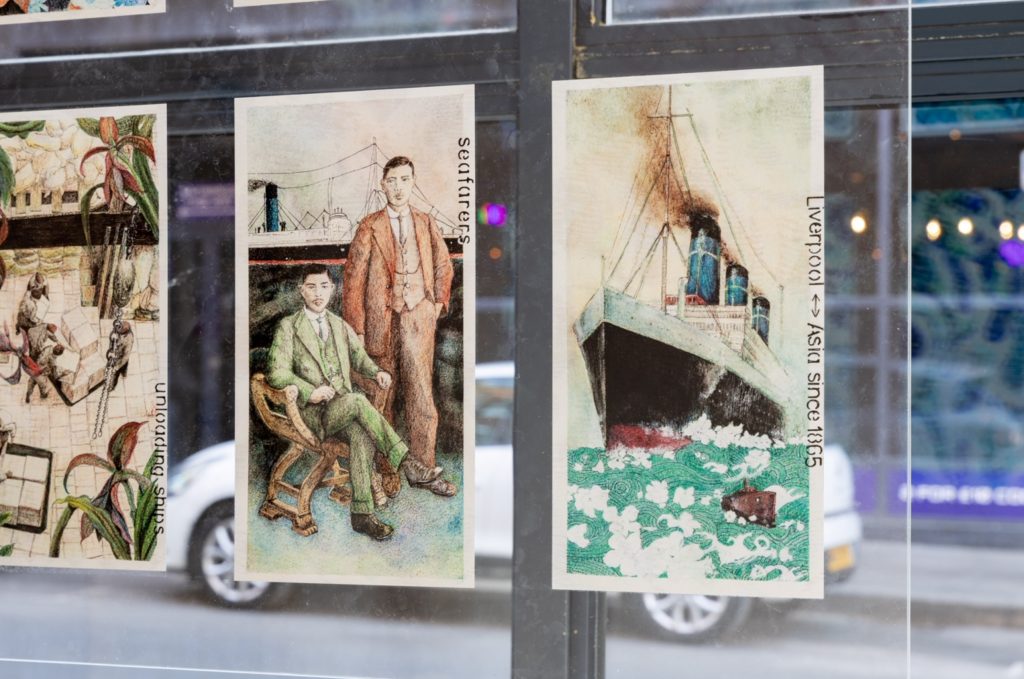
‘Cigarette Cards- Ethnic Chinese Seafarers in Britain 1900s’ , Yarli Allison (Photo by Jules Lister)
In the gallery’s first room is Asia-Art-Activism, specifically Yarli Allison‘s work. Allison’s work included ‘Cigarette Cards- Ethnic Chinese Seafarers in Britain 1900s’ and ‘In 1875 We Met at the Docks of Liverpool’. This body of work explored the untold narratives of forcefully deported Chinese sailors from the 1940s. The tragic story of these seamen and their forced disappearance by the British government continues to be scarcely published. Many sailors seemed to vanish overnight, and their families never uncovered the reason for their disappearance. While undertaking residency in Manchester and Liverpool, Allison sought to vividly examine this overlooked part of history. Research for this project included mapping oral histories and interviewing dual heritage descendants of sailors. These stories were brought to life through a series of multimedia paintings and a digitally reimaged landscape depicting Liverpool’s lost Chinatown. Accompanying Allison’s work is the collective’s new publication ‘Experiments in Care and Collective Disobedience’, a sensitive collection of essays, text, and images on solidarity and diasporic reflections in a post-covid world.
Decentralised collective Asian Feminist Studio for Art and Research feature a digitally recorded piece titled ‘Proxy Conference: On Boat’. With this piece, the AFSAR, comprised of a collection of artists, scholars, and curators, focus on sharing their lived experiences through a collaborative and playful medium. In a virtual game setting, they discuss diasporic hopes, memories, and healing. The recording displays a digital map and quirky animated avatars of those in conversation. This modern-day creative conversation space brings together a crosslocation network of feminist voices made possible by utilising virtual spaces. Inviting collective artist groups into this exhibition was important to ESEA Contemporary, aligning with their vision for a communal project space.
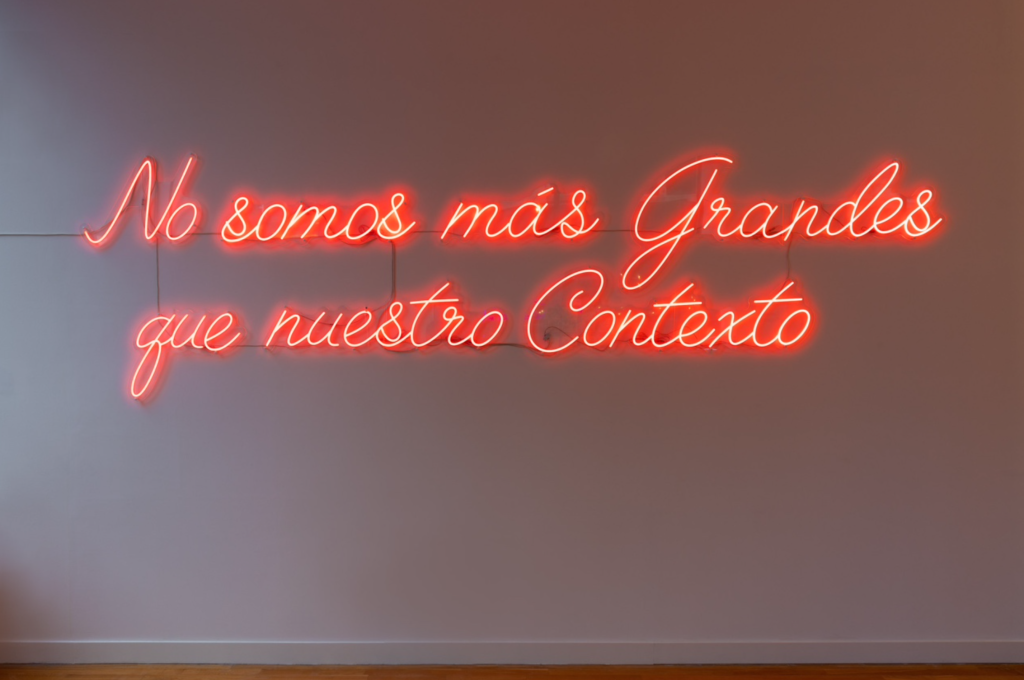
‘No Somos Mas Grandes que Nuestro Contexto’, Mimian Hsu (Photo by Jules Lister)
Mounted on the wall in the first room is Mimian Hsu‘s ‘No Somos Mas Grandes que Nuestro Contexto’ (we are not bigger than our context). This statement encapsulates the redefined ethos of the gallery space itself. The large-scale piece of red neon writing was created as a response to the artist’s upbringing in Costa Rica. Although the artist was born and raised there, her work also seeks to shed light on her grandfather’s story as a victim of the White Terror in Taiwan. This piece of work presents a powerful statement about being a migrant and a victim of history, reflecting on Hsu’s relationship with a place where she has been seen as a foreigner despite being raised there. First featured in Costa Rica in 2019, curator Hanlu Zhang decided not to translate the piece from its original Spanish. This prompts people to observe, learn and engage with the piece to understand it. Zhang wanted to capture a part of migrants’ experiences when relocating to a new place with the presence of Hsu’s work.
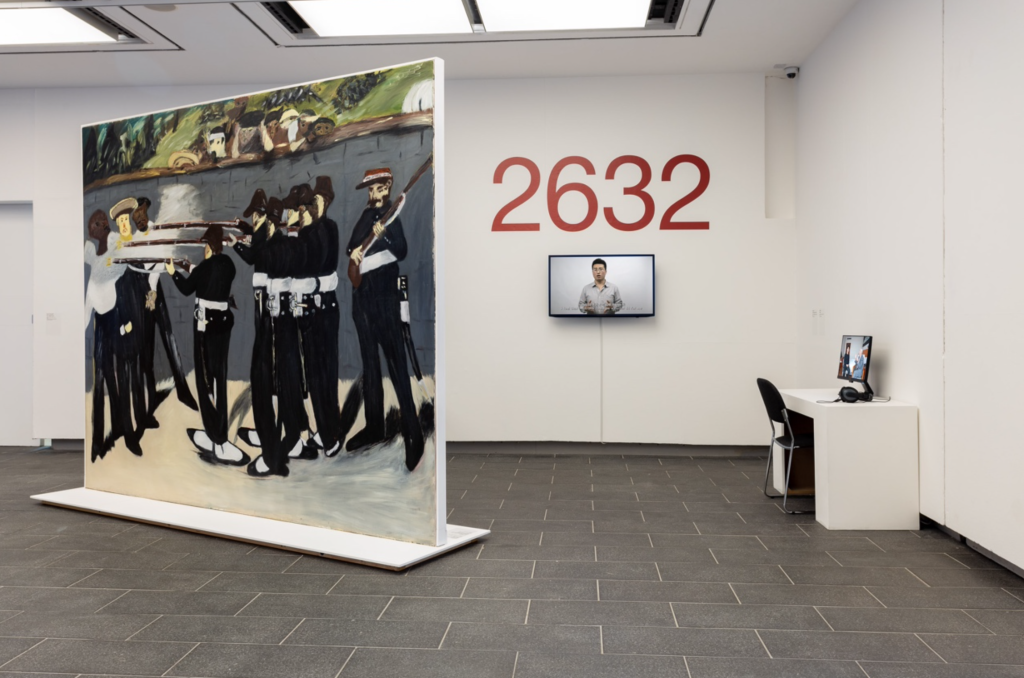
‘Australia’ , Lui Weiwei (Photo by Jules Lister)
Moving into the second gallery room Lui Weiwei‘s ‘Australia’ combines social investigation, public discussion, and in-depth documentation to explore whether his brother should migrate to Australia. The work features a series of videos debating this personal dilemma concerning his brother’s fate, one in favour of moving to Australia and one for remaining in China. A staged conversation between Weiwei’s brother and an Australian man examines common questions asked when crossing borders. Weiwei decided to invite the public to vote on this matter by posting a poll on a Chinese social media platform. Controversy arose when a group of anonymous Chinese artists decided to purchase votes corrupting the overall score. Although unplanned, this proved to be an interesting addition to the discourse on public voting and collective decision-making.
In contrast to work driven by text and speech, Hong Kong artist Isaac Chong Wai explores movement and fluid silence in ‘Rehearsal of the Futures: Is the world your friend?’. This performance art piece responds to global protest by illustrating shared gestures and movements observed across different locations. The subtle intention and muted desperation of these movements breaks up the space and offers an almost calming portrayal of activism. Chong’s newly commissioned installation ‘Two-Legged Stool’ acts as a metaphor for the triangular unstable relationship between China, Britain and Hongkong. Made up of plastic and mirrors, the sculpture appears to have three legs when observed from a certain angle and only two when standing on the opposite side. The illusion of the stool signifies transparency and fragility as driving forces behind this piece and the political conflicts in the UK, Hong Kong and China relationship.
Another example of uncovering overlooked narratives is Koki Tanaka‘s ‘Vulnerable Histories (A Road Movie)’. This series of films, a carefully curated book documenting the project’s journey, and photographs, focus on the stories of Zainichi Koreans, Zainichi meaning ‘In Japan’. Many Korean people were forced to migrate to Japan during the Japanese occupation and although many Zainichi Koreans have now lived in Japan for several generations, personal and institutional discrimination remains prevalent. The intimate films invite two young protagonists of culturally hybrid backgrounds to learn about their connected ancestry and the systematic racism experienced by the Korean diaspora in Japan. This work displays emotional exchanges of inquiry and expression, verbal campaigning, and lectures. By highlighting this underacknowledged and painful issue, Tanaka’s work calls for quiet reflection on how divided societies can co-exist.
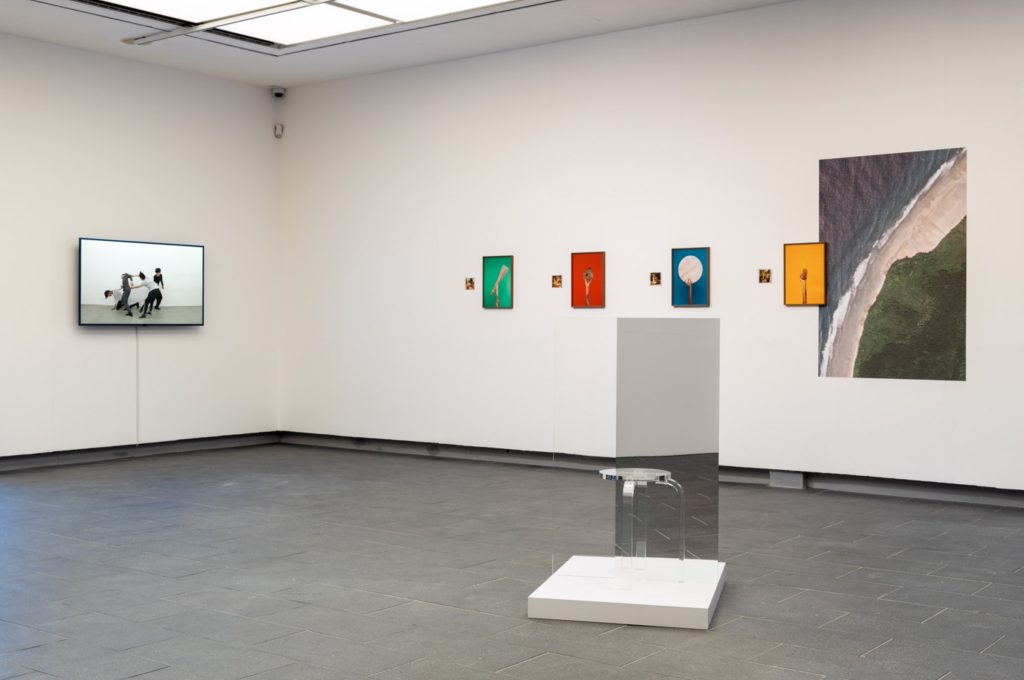
‘Matter Out Of Place’, Audrey Albert and ‘Rehearsal of the Futures: Is the world your friend?’, Isaac Chong Wai (Photo by Jules Lister)
The final piece work by prominent Manchester-based artist Audrey Albert displays a collection of family photos and object-based images titled ‘Matter Out of Place’. Albert, who has Chagossian ancestry, runs a series of workshops with local Chagossian communities in Manchester. Her workshop ‘Chagossians of Manchester’ took place at ESEA Contemporary shortly after the exhibition launch. Albert’s work offers a pleasing moment of tranquillity gifted through visual touch, soft primary colours, and textural grace. The objects chosen each embody an aspect of Chagossian culture such as cooking, music, and everyday life. These haptic images are accompanied by family photos that bring a sense of nostalgia to the traditional objects. Albert celebrates shared identity and belonging through this series of proudly held material cultures.
Practice Till We Meet has established ESEA Contemporary as a bright and welcoming space for diverse stories to be shared. The centre is a valuable and exciting addition to Manchester’s contemporary art scene, designed to inspire the next generation of artists. The exhibition runs until the 28th May 2023, so definitely go and check it!
Filed under: Art & Photography
Tagged with: art, artists, community, contemporary art, conversation, Culture, East and Southeast Asian, esea, exhibition, gallery, global, literature, manchester, music, non-profit, performance, textiles
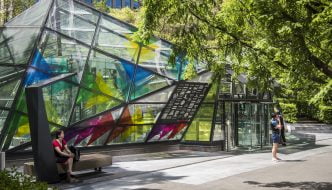
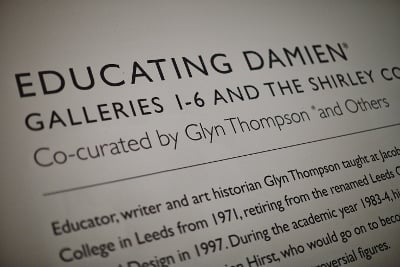

Comments